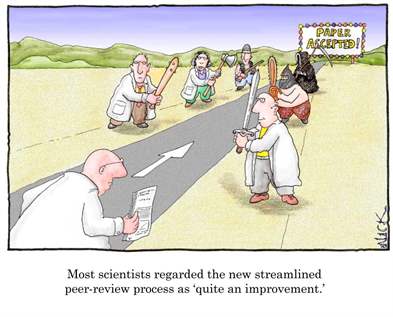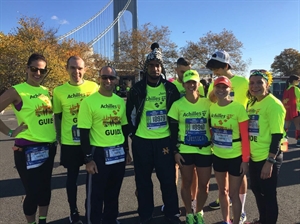Published
on
March 9, 2017
| 5,024 views
| 1 follower
members are following updates on this item.

“Leadership is influence nothing more and nothing less” (Maxwell, 2007, p. 11).
If leadership is influence, then as adjunct faculty members how can we build our influence in the classroom? The easiest way to describe this is by building our personal brand. Our brand has values and beliefs and leads us in all that do. However, many of us go around not understanding what that brand is, and therefore, we get lost, and our influence diminishes. There are four ways we can build our classroom brand, either online or in a traditional classroom setting: Setting Examples, Building Rapport, Dressing the Part, and Supporting Your Peers.
These four ideas are just like how one prepares for a marathon. One does not just go out and run a marathon, one first starts with a 5K, and builds up to a 10K. Then it gets a little more serious with a half marathon, which leads to the challenging 26.2-mile distance, the marathon. Let me explain further…
When we start out with our students we want to do what is almost effortless for us, set examples. This is like going out for an easy 3.1 mile run. It can be done every day and demonstrates your commitment to providing your students the best. What types of examples could you set? Be on time. There is nothing worse than having your students wait for you in class, wondering when it is okay to leave, if in person, or to have your online students waiting for an assignment so they can get going on their work. This leads into being prepared with what you need in order to provide the best learning. Students always want to feel heard, and there is nothing more empowering than hearing one’s name. This can be done in person verbally, or when you address a student online with feedback, make certain to use their name too. If we are going to require our students to use APA and proper grammar, we must also use it, so they can see how easy it is to use. Finally, respond to what your students need. Not everyone learns the same, so when there are questions, answer them in a timely ,manner, and if someone is struggling, make sure to reach out and see how you can support their learning. Being prepared and empowering students with their names and their needs, can go a long way to creating your brand. Which of these leading by example do you feel is most important?
Now you are feeling like 3.1 miles is a little easy, and you want to go a little longer, so you decide to start training for a 10k, 6.2 miles. This is not as easy as the 5K as you need to be a little more dedicated to your training. Just as in the classroom, when it is time to build rapport. To build rapport we have to able to communicate, and most importantly build and maintain trust. We all know about how to listen more, and to be clear in our communication. However, building trust is much more difficult.

To build trust, one needs to be honest and upfront with students. This is where using our syllabus and instructor policies can help in building trust, as it is using a training plan to build up to 6.2 miles. If you are consistent and follow your syllabus and instructor policies, you will also be setting the example. If a student says, they do not understand, and you have provided them the information, they may actually be saying they do not trust you. To build trust, make sure you are consistent and demonstrate empathy for their situations. How do you build trust in your classroom?
I can already hear what you are saying…how can dressing the part be like running a half marathon? This is easy, how many times have we had our students come to class in inappropriate clothing? How many times, have we not attending in appropriate dress? It does happen believe it or not. If one does not wear or have the proper equipment when running a half marathon, 13.1 miles, then there are many things which can go wrong which will impede our movement. Similarly, not wearing the proper clothes to demonstrate professionalism in the classroom or the workplace, for that matter, could lead to a brand in which students do not respect. It may sound simple, but in truth dressing just right, so as to not be over or under dressed is important. What are some of your best practices for dressing the part?
Now, you are ready to go the distance, and run 26.2 miles. A marathon distance, is the combination of all that has come before and then some perseverance, and perhaps the need for assistance. When training for a marathon it might be a good idea to get some support from someone who has done it before. This could be easy to do for a running event, but sometimes, we find it challenging to ask for support we need in everyday life, just as we ask our students to do from us. Our peers are a great resource to help support our brand, by being mentors, by providing a peer review of our work, or even allowing us to be a learner, so we can grow too. One of the hardest steps to take is the one which adds to the current knowledge. By performing our own research and learning, we are demonstrating our commitment to education and leadership, with our peers, and ultimately our students. We all need a little support now and again, but do not feel that you can outrun any issue on your own, reach out to your peers for support. What is keeping you from getting the support you need?

Today we have gone on a small journey to discover what we can do to be better leaders in our classrooms. Through leadership by example, we model the way for our students to be the best they can be too, by demonstrating timeliness, best practices and even how we present ourselves. By building rapport we share our experiences and in the experiences with our students as we learn alongside each other and from each other. We also, go beyond our classroom and support our peers through mentoring and building additional knowledge. All of this is created through trust and open communication. Be your own Firm of Endearment*, providing opportunities for growth and discovery for your customers, just as companies such as Whole Foods and Southwest Airlines do…Take care of your students so they can change the world, and cross the finish line together.
Reference
Maxwell, J. C. (2007). The 21 irrefutable laws of leadership. Dallas, TX: Thomas Nelson
*Firms of Endearment by Sisodia, Sheth and Wolfe and Conscious Capitalism by Mackey and Sisodia are great examples of organizations which encompass some of the basic values expressed in this blog. Take a look and see how some of the best organizations, support their brand.

This group of crazy people embarked on not only a personal marathon journey, but also ones of two visually impaired athletes. The two teams represented here completed the New York City Marathon on November 6, 2016. There was team work, there was communication, there was dressing the part, there was trust, and there was peer support so that together the finish line was just an eventuality.
Dr. Brent Scholar is an Instructor for the Faculty of Leadership and Interdisciplinary Studies at the College of Integrative Sciences and Arts at ASU. Additionally, Brent has taught on traditional ground and online courses in leadership since 2014 at GCU. He earned his doctorate in Organizational Leadership, and since 2009 is the principle of Scholar Consulting, an organizational leadership and strategy consulting company. Brent’s diverse industry background and experience provides insight into how different organizations lead, evolve, and work towards greater inclusion. Brent has been an education member of Diversity Leadership Alliance bringing together organizations across the valley to learn how to increase awareness and inclusion. In his spare time he trains for triathlons and guides disabled athletes in endurance running events.
Page Options
6 Comments
Dear Sandi,
Thank you for sharing Dr. Scholar's article. I teach for the COE division of GCU and was interested in how much this article followed the exact advice instructors give our student teachers to become the best and most effective teachers they can be The advice from the article and comparing it to student teaching is right on target with how we (as GCU COE instructors) tell our education students exactly....build trust, rapport, dress the part, etc. Solid article and very supportive and insightful.
Shawn Feaster Johnson, Ed.D.
Adjunct faculty
Thank you Shawn! I am glad this reinforces what you are teaching. Let me know if I can support what you do in any way.
Brent
Hello Sandi and Brent, I agree, leadership is all about influence, as Maxwell teaches. I enjoyed reading your insights about the journey to building professionalism, trust and collegiality as an adjunct faculty member. You have captured the challenging of bringing added value to the classroom very well.
Steve
Hi Steve, thank you for your thoughts. How do you bring these ideas to the classroom?
I make a commitment to continually find ways to add more value into my classroom. Over the last year, I have done this by adding games to my cohort class experience. I use Kahoot to quiz my class over their readings each week. I have challenged my class to create mindmaps using freeware available from open internet sources. And I have built Jeopardy boards and run a game experience as a way to review the class concepts.
I have also added FAQ files to my classes this year.
I'll be doing more with YouTube videos this coming year. Some students really enjoy the chance to listen and view the instructor's thoughts on the class concepts.
Steve
I like using videos too, but not via YouTube. I work at ASU and we have software which directly links to our LMS. It is so easy and confidential. I do agree my students like to meet me in the beginning of the course as I share something personal and let them meet my TAs, my cats. I then take them on a tour. Then throughout the course I interact when appropriate via video, just ot break it all up.